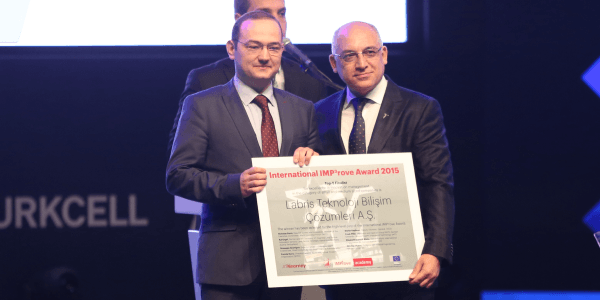
Spam E-mails Increased 140%
2014 is the Year of Cyber Espionage
Labris Networks, which provides cyber security for over 3,500 corporations and organizations, released its cyber security report. Analysis carried throughout 2014 pointed out serious problems, especially about spam e-mails. The report states that spam rates reach up to 84% in all transmitted e-mails and the alarms generated by threats increased 10% compared to previous year. The report revealed that spyware and ransomware got to a peak point in 2014 and cyber world became a battle field.
Labris Networks, which developed Türkiye’s first commercial national firewall in 2003, Türkiye’sfirst native UTM product in 2005 and is capable of 24/7 monitoring and control in its Security Operations Center (SOC), released its 2014 Cyber Security Report and 2015 Predictions.
The report was generated with the data obtained from Labris SOC and it includes events specific to Türkiye and world in general. Analyses carried throughout 2014 reveal that Türkiye had serious problems, especially about spam. The report states that spam rates reach up to 84% in all transmitted e-mails and spam e-mails increased 140% compared to previous year. According to the report, online product sales constitute the biggest topic of spam contents, however with the new e-commerce law in effect, there might be a decrease in these spam e-mails. Malware distribution messages, commercial offers, social networks and sexually explicit e-mails follow online product sales according to quantities of spam topics.
According to the observations in Labris SOC over the course of 2014, 96% of malware attacks on personal computers targeted Windows platform and 97% of malware attacks on mobile devices targeted Android platform. The report highlights that alarms generated by threats have increased 10% compared to previous year.
Blackmail and Espionage Year: 2014
Labris Networks’ report revealed that spyware and ransomware got to a peak point in 2014. Distributed through web and e-mails, ransomware can be used for actions like encrypting users’ files or hacking their accounts. Subsequently, the hackers that control these malware ask for money to remove encryptions. CryptoLocker is the biggest example for ransomware used in 2014 and it affected the whole world, especially USA.
Caredo and Reign were the most famous spyware of 2014. Especially Caredo made significant damages targeting diplomacy and government centers in North Africa and notably in Morocco. In addition to this, Belgacom getting hacked, APT28 affecting Eastern Europe and rumored to be affiliated with Russia, and espionage campaigns like China-supported Operation SMN have been the prominent incidents that took advantage of malware. With these incidents in 2014, the report remarks that cyber espionage has become normal and countries like USA and UK decided to join forces against these threats.
The Biggest DDoS Attack in History
According to Labris Networks’ detailed report, year 2014 witnessed the biggest DDoS attack in history. The 500 Gbps attack in November has been recorded as the biggest DDoS attack in history. Besides DDoS, many attacks aiming to leak end-users’ personal data also became hot issues of 2014. Services that have millions of users got hacked, resulting in personal files and account information getting captured. The claims that some of these attacks were supported by certain countries caused international crises. USA, who suggested in the past that cyber world would become another battle field after land, sea and air, became the subject of the most significant attack with the latest DDoS attack.
Open source software was also included in Labris Networks 2014 Cyber Security Report as one of the fields with problems. A vulnerability named Heartbleed in OpenSSL platform caused personal data leaks in open SSL servers.
What Should We Expect in 2015
Labris Networks —which provides security for more than 3500 corporations and organizations in 20 countries and one of the 12 companies in the world having an EAL4+ Common Criteria certificate, shared its 2015 predictions in the report.
Labris Networks warns that preparing malware will become much more easier in 2015 since cyber criminals started publishing DIY kits and creation guides so more people equipped with basic knowledge can easily create attacks for specific purposes.
Even though PC is getting replaced by mobile devices, the report points out that there has not been any full scale attacks targeting mobile platforms yet, so we should expect more ransomware for mobile devices.
Labris Networks also emphasizes on the security issues of “Internet of Things” (IoT) concept and mentions that there could be attacks targeting devices like smart TVs, cars, watches and wristbands.
The report states that open source software were discredited due to vulnerabilities resulting in big damages and predicts that attacks on these software and protocols will continue.
Providing security against DDoS attacks with its Harpp DDoS Mitigator cyber warfare product line, Labris Networks remarks that DDoS attacks will become more sophisticated in 2015 and points out that current protection systems and ISP based protection measures in many organizations are not strong enough to withstand these sophisticated DDoS attacks.
Labris Networks’ report aims to increase awareness against risks in public, military and private organizations. Stating that instead of solely using products; products, services and information should be used together against security risks, Labris Networks emphasizes the importance of these trio optimizing security while increasing efficiency of organizations.
You can access Labris Network’s full report from here.


Labris was one of the finalists in the International IMP³rove Innovation Competition

Labris Networks Returns with an Award from the International Innovation Champions League Representing Turkey





